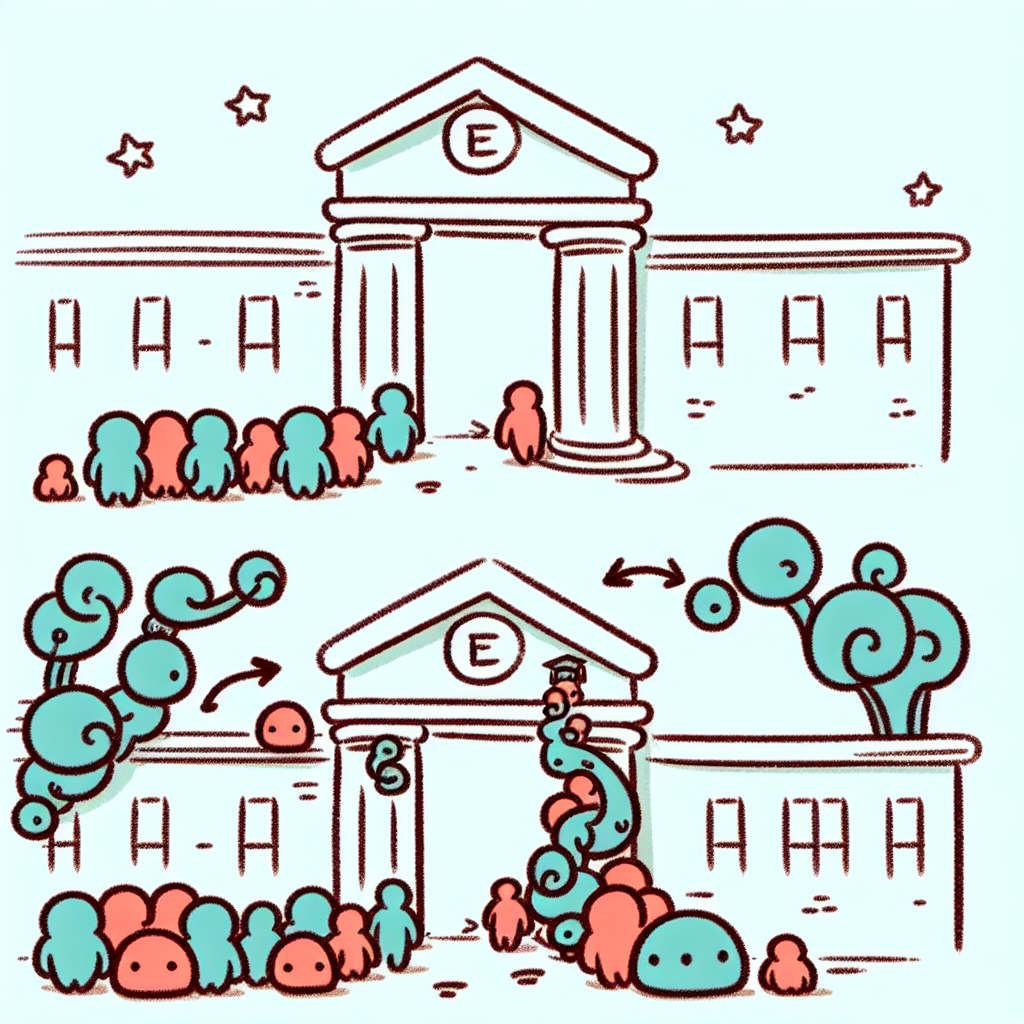Introduction
The Ivy League is a group of eight private colleges in the Northeastern United States: Harvard, Yale, Princeton, Columbia, Brown, Dartmouth, Cornell, and the University of Pennsylvania. Originally an athletic conference, the Ivy League has since become synonymous with academic excellence, prestige, and selective admissions. These institutions have deep historical roots—Harvard, for example, was founded in 1636—and have played a significant role in shaping American higher education.
Applying to Ivy League colleges remains a top priority for ambitious students around the world. These schools are known not just for their rigorous academics, but also for their influential alumni networks, research opportunities, and strong financial aid policies. Despite acceptance rates that often fall below 10%, students are drawn by the prospect of gaining a world-class education and access to unparalleled resources.
This guide is designed to offer data-driven, realistic, and strategic advice for those applying to Ivy League colleges. It aims to demystify the admissions process, highlight what truly matters in an application, and help students navigate their path with clarity and confidence.

📊 Ivy League Admissions Landscape: Class of 2028 and Beyond
📉 Admission Rates and Selectivity
Applying to Ivy League colleges continues to be highly competitive. For the Class of 2028, seven out of the eight Ivy League schools admitted fewer than 6% of applicants, reflecting a trend of increasing selectivity over the past decade (Wikipedia - Ivy League Admission Rates). Harvard, Columbia, and Yale reported some of the lowest acceptance rates, hovering around 3% to 4%.
Over the years, acceptance rates have shown a steady decline as the number of applicants has increased and institutions have adopted more holistic admissions practices. This has led to a more competitive landscape for students applying to Ivy League colleges.
Acceptance rates also differ significantly between Early Decision and Regular Decision rounds. For instance, the Early Decision acceptance rate stands at 23.4%, while the Regular Decision rate falls to 11.6%, highlighting the strategic advantage of applying early (Wikipedia - Early Decision).
📈 Growth in Application Volume
The volume of applications to Ivy League colleges has seen consistent growth. Each admissions cycle, schools report record-breaking numbers of applicants. This trend is partly driven by the adoption of test-optional policies, which have removed barriers for students who may have been discouraged by standardized testing requirements.
In addition, platforms like the Common Application and Coalition Application have made it easier than ever for students to apply to multiple schools with minimal additional effort. As a result, applicants are casting wider nets, leading to increased competition and lower admit rates.
🧬 Institutional Priorities and Admissions Policies
Admissions policies at Ivy League schools reflect a range of institutional priorities. While academic excellence remains crucial, colleges are also focused on enrolling diverse and well-rounded student bodies. This includes giving consideration to athletes, legacy applicants, first-generation college students, and underrepresented minorities.
These priorities are often shaped by each university’s mission statement and values. Fit—both in terms of academic interests and community contribution—plays a key role in decision-making. Applying to Ivy League colleges requires a strategic understanding of how these institutional needs align with an applicant’s profile.

🏛️ Key Influences on Admission Outcomes
🏷️ Legacy Status and Preferential Treatment
Legacy status plays a significant role when applying to Ivy League colleges. Data shows that legacy applicants are admitted at disproportionately higher rates. For instance, at Princeton University, 41.7% of legacy applicants were admitted compared to just 9.2% of non-legacy applicants (Wikipedia - Legacy Preferences). This preferential treatment has sparked ongoing ethical and legal debates. Critics argue that it perpetuates inequality by favoring applicants with family ties to the institution, often at the expense of more qualified non-legacy students. As a result, non-legacy applicants may face stiffer competition for limited spots, raising concerns about fairness and equity in the admissions process.
💰 Socioeconomic Factors
Socioeconomic background also deeply influences outcomes when applying to Ivy League colleges. Students from high-income families are vastly overrepresented. For example, 72% of Princeton’s student body comes from the top 20% income bracket, while only 2.2% come from the bottom 20% (Wikipedia - Ivy League). Although many Ivy League schools promote need-blind admissions and offer generous financial aid, economic disparities still affect who applies and who ultimately enrolls. Prospective students must navigate the complexities of financial aid policies and assess the affordability of attending these elite institutions.
🧑⚖️ Disparities by Race and Ethnicity
Racial and ethnic disparities also influence admissions decisions. A study found that Asian American applicants have 28% lower odds of admission compared to white applicants with similar academic credentials (arXiv Study on Racial Disparities). Holistic admissions processes—designed to evaluate students beyond test scores and grades—have come under scrutiny for potentially enabling implicit biases. The role of affirmative action in promoting campus diversity has been debated in courts, culminating in recent Supreme Court decisions that may reshape future admissions policies. These developments could significantly alter how race and ethnicity impact the process of applying to Ivy League colleges.

🧰 Strategies for Building a Competitive Ivy League Application
📚 Academic Excellence
Strong academic performance is foundational when applying to Ivy League colleges. Admissions committees look for high GPAs, strong class ranks, and evidence of intellectual rigor. Taking Advanced Placement (AP) or International Baccalaureate (IB) courses demonstrates a willingness to challenge oneself academically. These courses not only show preparedness for college-level work but also provide context for the applicant's academic achievements within their school environment.
In the evolving landscape of standardized testing, many Ivy League schools have adopted test-optional policies. However, submitting strong SAT or ACT scores can still enhance an application, especially for students from schools that do not offer many advanced courses. An effective testing strategy includes preparing early, understanding each school's testing policy, and deciding whether scores will strengthen the overall application.
🎯 Extracurricular Impact
Ivy League colleges value applicants who show sustained commitment and leadership in their extracurricular activities. Instead of participating superficially in many clubs, students should focus on a few meaningful areas where they can demonstrate initiative and impact. Roles such as club president, founder of a community project, or lead organizer of an event can showcase leadership and responsibility.
Depth is often more impressive than breadth. Admissions officers prefer to see deep engagement in a few key areas rather than scattered involvement. Passion projects—self-driven initiatives that align with a student's interests—can stand out, especially when they reflect intellectual curiosity or community contribution. Whether it's publishing research, launching a nonprofit, or creating a podcast, authentic projects can distinguish an applicant.
📝 Essays and Personal Statements
Essays are a critical component of Ivy League applications. The main personal statement should offer a genuine, reflective narrative that provides insight into the applicant's values, experiences, and identity. Authenticity is key—admissions readers can detect overly polished or insincere writing.
Supplemental essays should be tailored to each institution. These responses are opportunities to show how the applicant's goals and interests align with the college's programs, culture, and values. Demonstrating specific knowledge of academic offerings, faculty, or campus initiatives can strengthen these essays.
Common mistakes to avoid include using clichés, focusing too much on accomplishments without reflection, and failing to answer the prompts directly. Clarity, honesty, and thoughtfulness are essential.
📣 Letters of Recommendation
Letters of recommendation offer valuable third-party perspectives on an applicant’s character and abilities. Choosing the right recommenders—typically teachers who know the student well and can speak to their academic and personal strengths—is crucial.
Applicants should provide their recommenders with context, such as a resume, a summary of achievements, or a statement of goals, to help them write more detailed and personalized letters. A gentle discussion about what qualities the student hopes are highlighted can also support stronger recommendations.
🗓️ Timing and Application Strategy
Deciding when to apply—Early Decision (ED) or Regular Decision (RD)—can influence admission chances. Applying ED can demonstrate strong interest and may offer a statistical advantage, but it is binding and should only be chosen if the school is the applicant’s definitive first choice.
Regular Decision allows more time to strengthen the application or consider other options but may be more competitive. Students should weigh the pros and cons of ED policies, including financial considerations.
Planning should begin by junior year, with a clear timeline for testing, building the activity list, drafting essays, and securing recommendations. A strategic approach ensures that all components of the Ivy League application are completed thoughtfully and on time.

🧠 Psychological and Emotional Preparation
🎢 Managing Expectations
When applying to Ivy League colleges, it's important to approach the process with a realistic mindset. These schools have extremely low acceptance rates, often below 10%, making rejections common even for highly qualified applicants. Understanding these odds helps students prepare emotionally for all possible outcomes.
Avoiding the “Ivy-or-bust” mentality is critical. Placing all hopes on a single outcome can lead to unnecessary stress and disappointment. Instead, students should focus on finding the best fit for their goals, strengths, and interests—whether or not that includes an Ivy League name.
🔍 Exploring Alternatives
There are many excellent alternatives to Ivy League colleges. Institutions like Stanford, MIT, and the University of Chicago offer world-class academics and resources that rival or exceed those of the Ivies in particular fields.
Public universities often provide honors programs and significant merit-based scholarships, creating strong academic communities and financial advantages. Schools like the University of Michigan, UC Berkeley, and UNC Chapel Hill have top-tier programs that attract students from across the country.
International universities such as Oxford, Cambridge, and McGill also present compelling options. These schools offer rigorous academics, global reputations, and diverse cultural experiences, often at a lower cost than U.S. private colleges.
By broadening their perspective, students can reduce pressure and increase their chances of finding a school where they will thrive—regardless of an Ivy League label.

The Bigger Picture: Equity, Access, and the Future of Admissions
⚖️ Reforming the Admissions Process
In recent years, the process of applying to Ivy League colleges has come under increased scrutiny, particularly regarding how legacy admissions and socioeconomic privilege influence outcomes. Legacy preferences—admissions advantages given to children of alumni—have been criticized for perpetuating inequality, effectively giving an edge to already advantaged applicants. This has prompted calls for reform aimed at leveling the playing field.
One proposed reform is the implementation of lottery-style admissions among qualified candidates. This approach could minimize subjective biases and reduce the influence of wealth and connections. Another widely discussed idea is class-based affirmative action, which would prioritize applicants from lower-income backgrounds rather than focusing solely on race. Such a shift could address disparities without running afoul of legal challenges to race-conscious admissions policies. Increased transparency in the admissions process—such as clear criteria and data on who gets accepted and why—could also help build trust and accountability.
🌍 Promoting Inclusivity in Higher Education
Efforts to improve equity in applying to Ivy League colleges also involve expanding access through outreach and pipeline programs. These initiatives aim to identify talented students from underrepresented backgrounds early and provide them with resources, mentorship, and guidance to navigate the admissions process.
Supporting first-generation and low-income students is essential not only during the application phase but also throughout their college experience. Programs that offer academic advising, financial aid counseling, and community-building resources play a critical role in helping these students thrive once admitted. As Ivy League institutions consider the future of admissions, prioritizing inclusivity and access remains a central concern.

📚 Additional Resources and Tools for Applicants
When applying to Ivy League colleges, leveraging the right resources can make a significant difference. A range of tools, platforms, and content can help applicants navigate the competitive admissions process more effectively.
College Admissions Tools and Platforms
Several digital platforms are designed to support students during the college application process:
- Scoir: A college planning network used by high schools to help students discover colleges, track applications, and communicate with counselors. Its interface allows students to compare acceptance data and explore college fit based on academic and extracurricular profiles.
- Naviance: A widely-used platform that offers career assessments, college search tools, and data on historical admissions trends from a student’s high school. Students can track their applications and access scholarship information.
- CollegeVine: Offers free tools like a chancing calculator, essay guides, and a school list builder tailored to student profiles. It also provides paid mentorship and essay review services.
Books, Podcasts, and Blogs on Elite College Admissions
Staying informed through expert content can help applicants better understand what Ivy League admissions officers are looking for:
- Books: "Who Gets In and Why" by Jeffrey Selingo provides an inside look at the admissions process at selective colleges. "The Price You Pay for College" by Ron Lieber explores financial planning for higher education.
- Podcasts: Getting In: A College Coach Conversation offers weekly episodes covering all aspects of the college application process. Inside the Admissions Office interviews former admissions officers and provides insights into elite college admissions.
- Blogs: Blogs such as College Essay Guy and PrepScholar provide detailed guides on essay writing, test prep, and admission strategy tailored for Ivy League applicants.
Free Resources for Essay Writing and Financial Aid
- Essay Writing: The Purdue Online Writing Lab (OWL) offers free writing guides that can help students refine their college essays. College Essay Guy also provides free brainstorming exercises and essay examples.
- Financial Aid: The official FAFSA website (studentaid.gov) is the starting point for federal financial aid. Additionally, CSS Profile (administered by the College Board) is required by many Ivy League schools. For scholarship searches, websites like Fastweb and Scholarships.com offer large databases of opportunities.
Using these additional resources can streamline the experience of applying to Ivy League colleges and help applicants present the strongest possible application.

Final Thoughts
Applying to Ivy League colleges is a rigorous and often intense process. With acceptance rates at many of these schools falling below 10%—and in some cases, even lower—gaining admission is extremely competitive (Wikipedia - Ivy League Admission Rates). However, it’s important to remember that admission to an Ivy League institution is not the only route to a fulfilling and successful career.
Instead of focusing solely on prestige, students should prioritize schools that align with their personal values, long-term goals, and preferred learning environments. Whether it's a large public university, a liberal arts college, or a specialized institute, the right fit can significantly impact your academic and personal growth.
Applying to Ivy League colleges—and to any college, for that matter—is more than a competition. It's an opportunity for self-reflection and discovery. Through writing application essays, considering future aspirations, and evaluating what you want out of your college experience, the process itself can offer valuable insights about who you are and who you want to become.
While legacy preferences and early decision policies may influence outcomes at some Ivy League schools (Wikipedia - Legacy Preferences, Wikipedia - Early Decision), and studies continue to examine disparities in access (arXiv Study on Racial Disparities), it is crucial to keep your focus on finding a college that supports your individual path. Success is not defined by a single acceptance letter, but by how well your college experience helps you grow and thrive.














